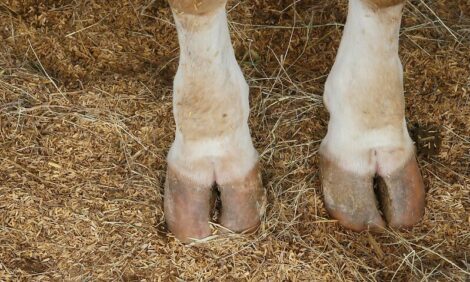



Floods Devastate Pig Farms Across China
ANALYSIS - Recent heavy rainfall and floods have been devastating major pig and pig feed production regions across China over the last month.China’s Ministry of Civil Affairs reports that the heavy rain, landslides and flooding in the north of the country since 18 July have now affected 10 provinces or regions including Beijing, Tianjin, Hebei, Shanxi, Inner Mongolia, Liaoning, Jilin, Heilongjiang, Shandong and Henan.
The floods have killed more than 100 people and destroyed farms and killed livestock across a vast area of the country.
About 10,000 pigs drowned at a village in Hubei province, news portal Sina.com reported.
The five provinces hardest hit by flooding produce about one third of the country’s pork, according to the National Bureau of Statistics.
The official Chinese news agency, Xinhua, reported that the Chinese central government has allocated 250 million yuan ($37.4 million) to disaster relief efforts in the flood-hit province of Hebei.
Beijing Municipal Bureau of Civil Affairs said that flooding has affected eight districts including Shijingshan, Mentougou and Fangshan. Around 100,000 people have been affected and 13,000 evacuated.
The impact of the floods was brought home by pictures of farmers in Xiaogan in Hubei province, which is one of the parts of China worst affected by the floods, weeping because their pigs have been destroyed.
For many farmers in China, their livestock represents their financial security.
The Aoxin Tianli Group, a leading producer of breeder pigs, market pigs and black pigs, as well as specialty processed black pig pork products said its pig farms in Wuhan City and some of the independently operated black hog farms in Enshi Prefecture have suffered different levels of damages as the torrential rains caused devastating flooding in southern China with Wuhan City being one of the hardest hit areas.
According to local government agencies, a record level of rainfall of more than 560.5 mm (22 inches) was reported in Wuhan City at the beginning of July.
All of the company’s pig farms in Wuhan City, as well as some of the independently operated black pig farms in Enshi Prefecture, suffered varying levels of damage, including livestock losses, contamination of feed supplies and damage to piggeries and other structures on the farms.
“While we are still reviewing our losses, we expect total losses associated with the floods to be approximately $1.5 million,” Wocheng Liu, Chairman and Co-Chief Executive Officer said.
“With the help of local rescue and relief agencies, the Company is working diligently to bring the operations of our hog farms back to normal while trying to minimise the impact to our farms and prevent further damages.
“While we and the other ten million residents of the City of Wuhan are still recovering from the devastating blow of Mother Nature, we are optimistic that much of our losses due to the floods will be largely offset by a spike in pork/hog prices in coming months as widespread livestock losses make it difficult to meet the normal demand for pork in the Wuhan market.”
At the beginning of the month, 6,000 pigs in the village of Anhui that were almost certainly going to drown as flood waters continued to rise across eastern China were saved when Anhui’s Xishang investment company sent a rescue team.
Breaches in the dikes on the Hanjiang River in central China's Hubei Province flooded seven villages, 1000 hectares of farmland and two fishery ponds.
Farmers have been rushing to harvest rice to avoid further losses caused by flood as the heavy rains battered Duchang County and flooded many paddy fields.
The People's Bank of China (PBOC), the country's central bank, urged effective and efficient efforts to ensure funding for flood relief and post-disaster rebuilding.
The PBOC called on banks to ensure timely transfer of funds and streamline loan approval procedures to help disaster-hit areas restore production.
It said that loan requests from these areas should be made a priority.
The central bank has pledged supplementary lending to the China Development Bank and the Agricultural Development Bank of China to support their loans to improve urban underground networks, water conservation projects and other flood reduction capabilities.
Official data showed that the two policy banks have allocated more than 11.3 billion yuan (about $1.7 billion) in emergency lending to aid flood-stricken regions by early July.
The floods are also putting further pressure on the already record high pig prices.
Prices in China have risen by almost 51 per cent this year alone and they are predicted to rise higher after the floods and as farmers increase slaughter, including animals that have not reached slaughter weight, because of the floods in the central and southern regions.
Pig production dropped by 3.9 per cent in the first half of this year, which will force up domestic prices and draw in more imports.








